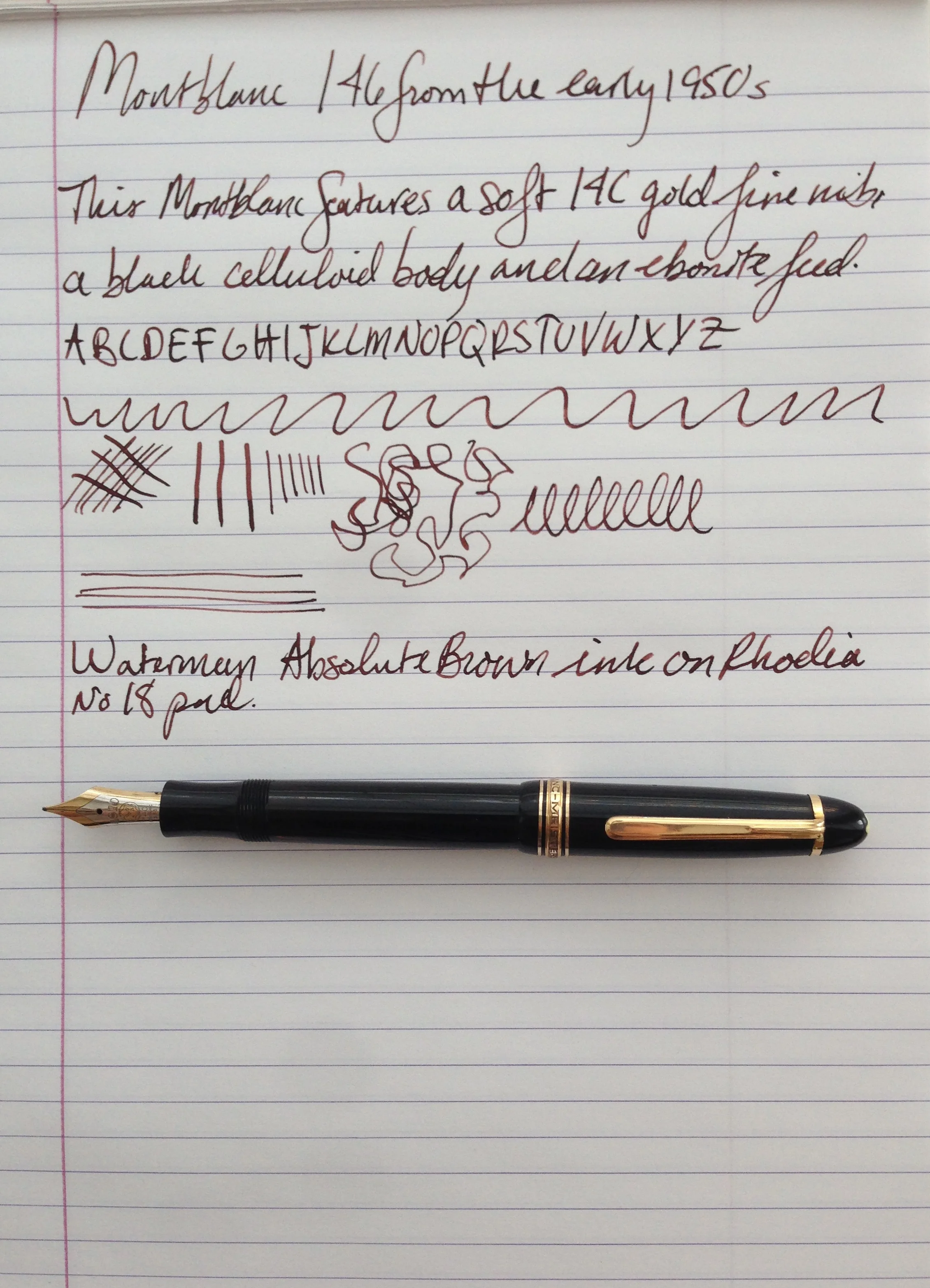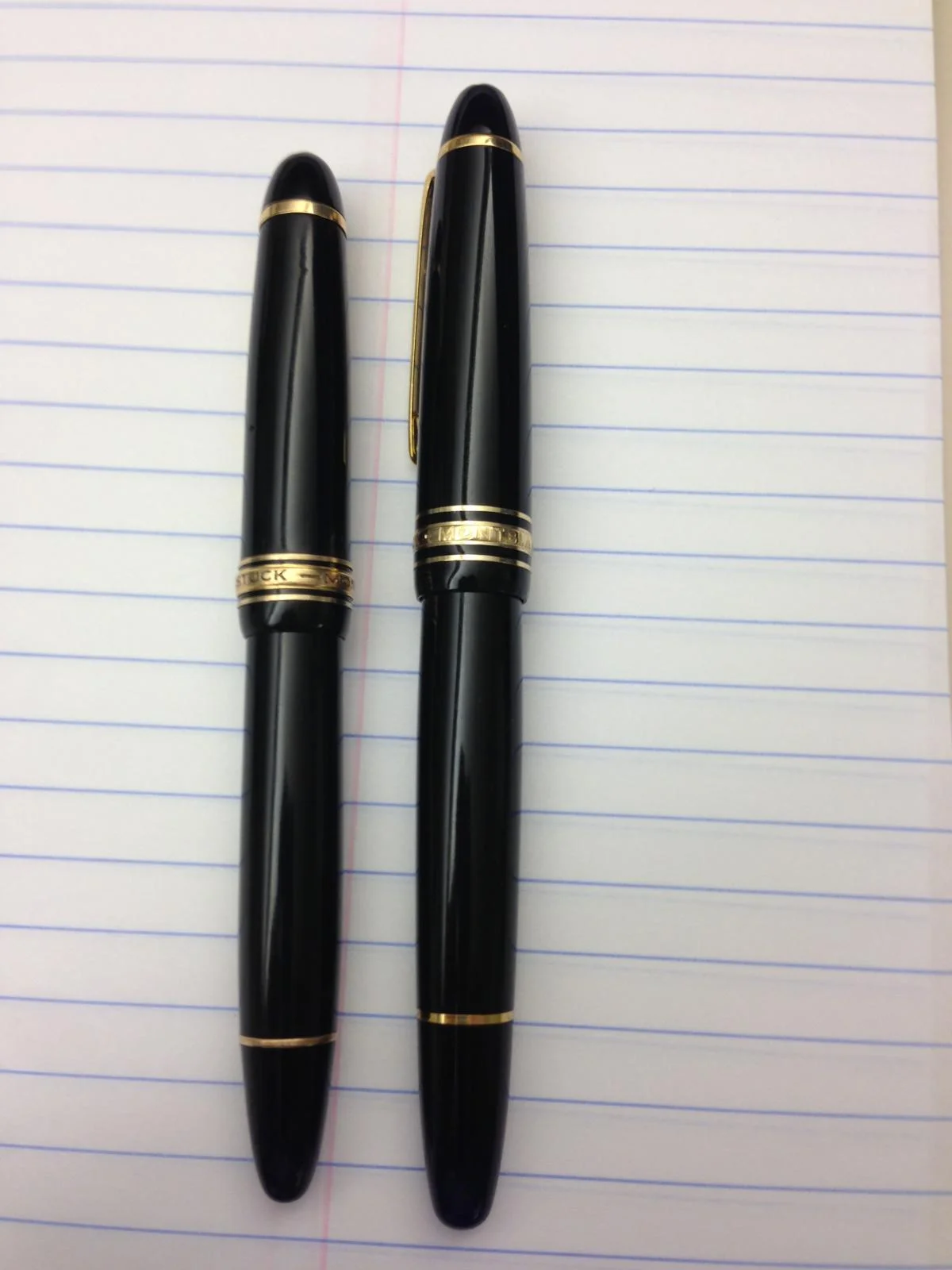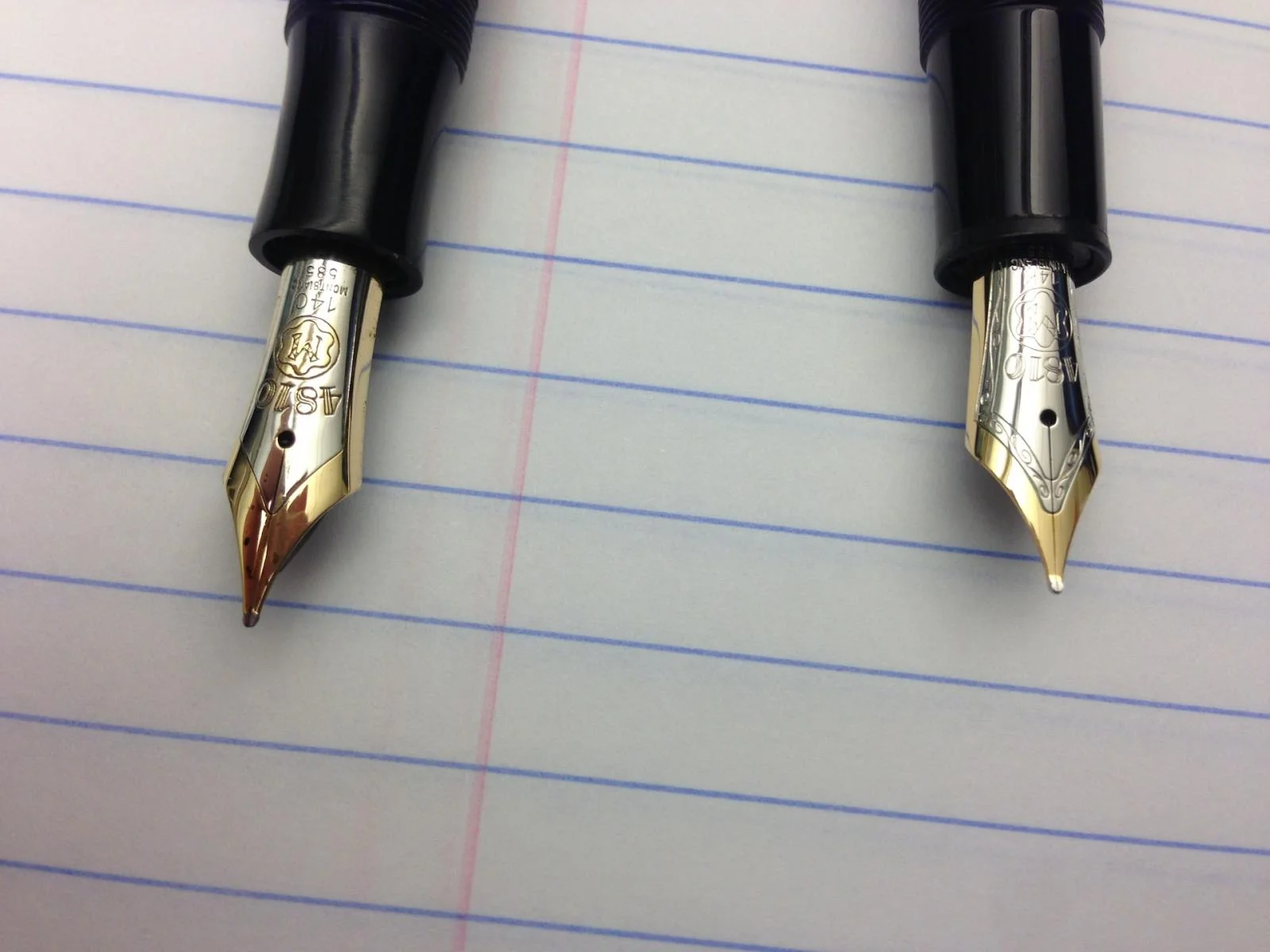If you are reading this blog you likely have a grail pen, something that you think is beyond or in some way more exciting than what is in your current collection. I have been collecting fountain pens for almost 10 years now and I strive to buy great writers over anything else. With the help of some friends at the Fountain Pen Network I landed on the Montblanc 146, specifically one from the early 1950s as the pens of this era had the most appealing features of the Meisterstück (masterpiece) line: a celluloid body, a softer 14C gold nib, and the flat ebonite “ski slope” style feed.
The 146 is a piston fill fountain pen that is larger than the 144 (Classique) and smaller than the 149. Compared with the modern 146 (often referred to as the “LeGrand”) the vintage 146 is slightly shorter with a shapelier barrel and deeper engravings on the gold furniture. The vintage 146 also has a larger more attractive two-tone 14-carat gold nib.
Vintage 146 Nib on the left, modern 146 nib on the right.
The 146 fits comfortably in my hand and weighs approximately 26 grams full of ink, and 18.5 grams uncapped. This pen does not post well. I have to apply more pressure than I would like to get the cap to sit straight on the body so I usually write with it uncapped. At 4.75” uncapped and just under 5.5” capped (not posted) it’s average sized and will be comfortable for most people to use.
The nib is the softest non-flex nib that I have used and provides some mild line variation. The buttery soft springy writing experience makes the 146 one of my favorite fountain pens. The nib writes wide and wet for a fine. The pen always starts right away and does not skip. I have left the cap off for over a half hour and it started without a hitch.
The vintage 146 uses a unique two-stage piston filling system that holds a lot of ink. You unscrew the piston knob, which will come up away from the body, but this does not move the piston. You keep twisting until you feel a transition at this point the knob becomes harder to turn (but still smooth) and no longer moves away from the body; it is at this stage that the piston moves. The mechanism behind this is complicated and likely discontinued due to cost. One weak point is the cork piston head; it is likely less durable than the synthetic ones found in most modern pens.
Being around 60 years old there is some loss of plate on the gold furniture but overall it is in great shape. If you look closely you can see that the nib tines are not in perfect alignment but the pen writes without a hitch so I haven’t been in a huge rush to get it to a nibmeister.
The prices of these pens have been going up and can be bought between $500-$700 on auction sites and for around $900 from a reputable dealer of vintage pens (I highly recommend the latter option). I bought mine on an auction site and got lucky as my pen turned out to be in great shape and functioned wonderfully.
To me the price is worth it as it offers a fantastic writing experience with an elegant high quality body but these pens can be tricky to buy and even trickier to fix if you get a bad one. I highly recommend the vintage 146 to experienced fountain pen users.









